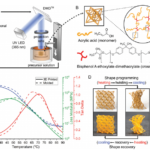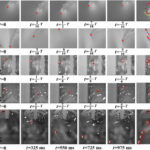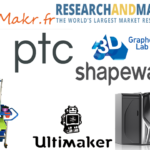

International researchers are reviewing structure and design concepts for liquid metal antennas, along with examining and expanding applications where they could prove to be useful. Their findings are outlined in the recently published ‘Liquid Metal Antennas: Materials, Fabrication, and Applications.’
Commonly used in communication devices today, antennas that can be reconfigured are attractive for applications that require a variety of different frequencies in operation, patterns, and polarization. Reconfigurable antennas are usually made with copper—and while such metal offers great efficiency, users are left to deal with inferior mechanical flexibility and ongoing limitations.
With fluid antennas though, mechanical properties of encasing materials are passed on, and the antenna takes on the shape of fluidic channels also—leaving them capable of deforming, whether bending stretching, folding, or twisting—and then reverting to their initial form.
Typical fluidic antennas are categorized as non-conductive, partially conductive, and conductive:
“Non-conductive fluids include de-ionized (DI) water, ethyl acetate, acetone, and various oils such as mineral/transformer oil, which are used in dielectric resonator antennas (DRA). Partially conductive fluids like seawater are also available and typically used in fabricating antennas for maritime applications, while solute concentrations in electrolytic solutions can be used to fine-tune antenna performance,” explained the researchers. “Finally, the third type, which this review focuses primarily on, is conductive fluids. Liquid conductive metals because of their solid-like oxide skin on the surface, impart mechanical stability to the elastomeric antennas and hence, provide flexibility while maintaining high conductivity suitable for antenna applications.”
While other more solid materials are limited in deformation, obviously their fluidic counterparts have no limits, making them useful in combination with rigid conductors due to the flexibility of fluidity and the physical properties associated with conductive fluid materials. The liquid form offers greater freedom and reconfigurability, leaving them most often created on ‘soft and flexible’ substrates for elasticity.
“Such elasticity is not achievable when using solid radiative elements,” state the researchers.

Conductive fluids are usually made of composites or are comprised of liquid metal. Nanocomposites may also be used to increase conductive properties.
“Mercury is the only metal available in liquid form at room temperature with melting point of −39 °C and an electrical conductivity of 1 × 106 S/m,” explain the researchers. “It also has good stiction properties and a low oxidation rate, making it a suitable material for developing a liquid antenna. However, mercury is extremely toxic and must be handled with care, resulting in its limited usage in antenna design.”
The authors point out that almost all the fabrication and patterning techniques for conventional antennas can be used with LM antennas; however, LM fabrication is generally defined as one of three types:
- Soft/photo-lithography
- 2D/3D printing
- LM spraying onto the substrate
For 3D printing purposes, liquid metal is used to fill channels and cavities in flexible substrates in FDM 3D printing. Other successful techniques, however, include direct writing of antennas, increasing both strength and conductivity.
Today, LM antennas are useful in applications such as:
- Skin-attachable motion sensing systems
- Wireless power transfer
- Biomedical implantable devices
- RFID tags
- Handheld cellular devices
“LM-based antennas might not represent a general alternative to standard high-frequency switching techniques used in modern communication devices because of their small electrical conductivities, slow switching speeds and micropump sizes,” concluded the researchers. “However, with recent development of better LM nanocomposites, fabrication/filling methods, and tuning/reconfigurability techniques, LM antennas do show a very promising prospect as part of the larger future 5G network, especially for applications demanding flexible antenna solutions.”
3D printing is being used increasingly more often for the fabrication of antennas, from polymer antennas used in SAR systems to origami-inspired RF antennas, equipment for multi-beam applications, and more.
What do you think of this news? Let us know your thoughts! Join the discussion of this and other 3D printing topics at 3DPrintBoard.com.
[Source / Income: ‘Liquid Metal Antennas: Materials, Fabrication, and Applications’]
If you're looking to get architectural 3D animation in the USA, our service provides an exceptional way to bring your architectural concepts to life through dynamic, immersive visuals. Through our platform, you can easily request high-quality 3D animations that showcase your designs in motion, offering a detailed view of your project from multiple angles and perspectives. Whether it's for a real estate development, a commercial building, or an urban planning project, our expert team ensures that every detail is captured in a visually compelling animation.
Through our website, you can seamlessly get architectural 3D animation tailored to your project’s specific needs. With our help, you can offer potential clients or investors an engaging experience that goes beyond static images. By integrating CGI animations with real-world settings, lighting, and textures, our team creates a lifelike experience that allows your audience to interact with your project as though it were already built. This service is perfect for presenting complex designs in a clear, visually attractive way that stands out in the competitive architectural market.




